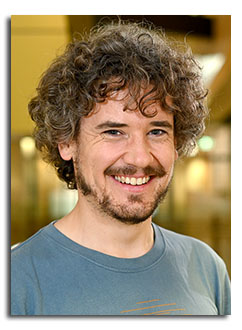
Abstract
Unlike standard diffused homojunction devices, which are typically limited by their highly recombination-active semiconductor-to-metal contacts, silicon heterojunction (SHJ) devices exhibit excellent surface passivation. This is enabled by the application of intrinsic and doped a-Si:H films to the wafer surfaces. These a-Si:H layers, however, entail drawbacks for optical performance and carrier transport. We investigate non-traditional materials for SHJ devices with the goal of replacing the a-Si:H or the transparent electrodes. These materials include nanocrystalline silicon (nc-Si:H) and organic semiconductors for contact formation; amorphous silicon suboxides (a-SiOx:H) for surface passivation; and transparent electrodes applied by atomic layer deposition (ALD) as protective layers against subsequent processing steps. Along with the optical and electrical properties of these materials, we study the impact on device performance associated with their deposition. For this we test the devices under standard testing conditions (25°C) and at elevated temperatures closer to those encountered in the field.
For nc-Si:H layers, we change process parameters as well as pre-treatments, gas variations and nucleation layers. We assess the suitability of these approaches for SHJ solar cells and apply selected measures in devices. Thereby we demonstrate a gain in short-circuit current density in the range of 0.5–1 mA/cm2 and good fill factor values of up to 79.2% using either n- and p-type nc-Si:H layers. Furthermore, with the goal of reducing optical losses, we test wide-bandgap a-SiOx:H layers for passivation. In terms of current gain without negative side effects on transport, we argue that these layers are best applied to the electron-collecting contact—put at the front of the device—as their application to the hole-collecting contact introduces a transport barrier for holes. This barrier deteriorates the device performance at 25 °C.
Furthermore, we also study aluminium-doped zinc oxide (ZnO:Al) layers deposited by ALD as a protective layer against sputter-induced damage and organic semiconductors as transparent electrodes for the hole-collecting contact. In both cases we observe a gain in terms of surface passivation, which indicates that these materials may be beneficial for the contact formation in future device structures. In addition to these material-related investigations, we unravel the temperature-dependence of each individual cell parameter and present a brief comparison of state-of-the-art technologies and their respective temperature dependence.
Click here to see all available video seminars.
Click here to go to the SPREE HOMEPAGE.
Brief Bio
Johannes Seif studied Physics at the University of Tübingen and the Swiss Federal Institute of Technology (ETH) in Zürich from where he graduated in 2009. Following his studies, he did an internship at Oerlikon Solar (Trübbach, CH) in the group for Plasma Enhanced Chemical Vapor Deposition (PECVD) and reactor development and started a PhD at PV-Lab (EPFL Neuchâtel, CH) in 2010. In his thesis project he focussed on PECVD process development for thin silicon layers and their application in silicon heterojunction solar cells. After graduating from EPFL in 2015 he continued working at PV-Lab developing c-Si bottom cells for c-Si/perovskite tandem devices. Before joining UNSW in July 2018, he worked at Meyer Burger Research as PECVD process engineer and INDEOtec as scientific consultant/project manager. Now at UNSW he is managing the ARENA project for the development of PECVD processes for transition metal oxide layers for application in passivating contact solar cells.
